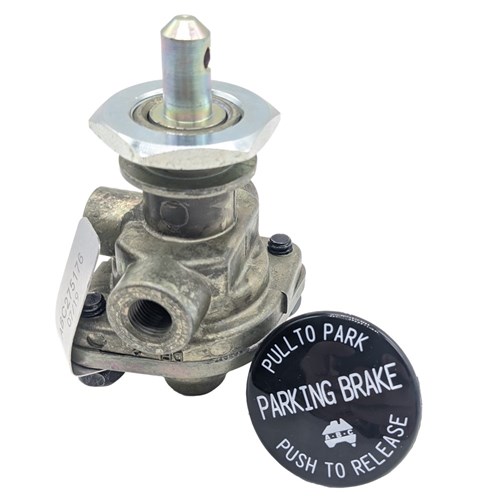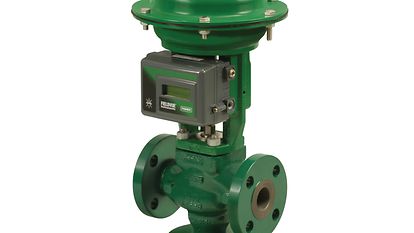Vital Factors to Take Into Consideration When Selecting Control Valves
Vital Factors to Take Into Consideration When Selecting Control Valves
Blog Article

Maximize Energy Savings and Convenience With Advanced Structure Automation Controls
In the realm of modern design and center monitoring, the assimilation of innovative structure automation controls stands as an essential innovation. The merging of innovation and sustainability has birthed a brand-new age where power effectiveness, convenience optimization, and operational streamlining are no much longer remote desires yet possible facts. By utilizing the power of automation, structures can adapt, react, and progress in ways that were as soon as unbelievable. The possibility for significant energy savings and improved comfort is not simply a pledge but an opportunity waiting to be met. This standard shift in structure management holds the vital to unlocking a world where environmental conscientiousness and owner well-being sympathetically exist side-by-side within the wall surfaces of our structures.
Power Efficiency Conveniences
Energy efficiency benefits can significantly decrease energy usage and operational prices in buildings. Energy-efficient systems, such as advanced building automation controls, can enhance the use of sources like heating, illumination, and cooling, leading to reduced power costs over time.
In addition, boosted power effectiveness can prolong the life-span of building devices and systems. By running more successfully, HVAC systems, lighting fixtures, and other structure components experience much less deterioration, leading to decreased upkeep and replacement costs. In addition, energy-efficient buildings frequently command greater property values and rental prices, offering long-term economic advantages to proprietors.
Furthermore, energy efficiency can improve passenger comfort and efficiency. Effectively controlled indoor settings with optimum lights and thermal problems produce a more positive and favorable work space, causing improved worker fulfillment and performance. Overall, the power effectiveness benefits related to sophisticated structure automation controls are diverse, encompassing cost financial savings, environmental stewardship, and resident health.
Boosted Convenience Control
Enhancing comfort control in building environments needs an innovative integration of advanced automation systems for optimum resident well-being. By utilizing innovative structure automation controls, centers can tailor the indoor atmosphere to fulfill the particular demands and preferences of residents. These systems make it possible for exact regulation of lights, temperature, and ventilation, creating a comfortable and efficient environment. Passenger complete satisfaction and productivity are very closely connected to thermal convenience, making it important to have systems in location that can adjust to transforming problems in real-time.
Improved comfort control surpasses basic temperature changes. It consists of functions such as customized settings, occupancy sensing units, and natural light use to produce a responsive and vibrant atmosphere. By including these innovative controls, structures can not only improve convenience but also boost energy performance by enhancing system operations based on actual tenancy and usage patterns. Eventually, focusing on resident comfort with sophisticated automation systems leads to an extra enjoyable and healthier interior atmosphere.
Operational Performance Improvements

Furthermore, the application of real-time monitoring and analytics devices allows structure drivers to determine energy ineffectiveness and operational anomalies promptly. By continually keeping track of power use patterns and system efficiency metrics, changes can be made in real-time to maximize power consumption and make certain peak operational efficiency. control valves. In addition, integrating need feedback methods right into building automation controls can even more boost look what i found functional effectiveness by dynamically adjusting energy use based on grid conditions and rates signals
Indoor Environment Optimization
Effective interior climate optimization is a basic facet of structure automation controls, guaranteeing residents' comfort and well-being while optimizing power financial savings. By using advanced sensing units and controls, developing automation systems can continuously check and change temperature level, moisture levels, air quality, and ventilation to develop an ideal indoor atmosphere. Keeping constant and comfortable conditions not only enhances resident satisfaction however additionally boosts efficiency and general health.
Indoor environment optimization additionally plays a crucial duty in power performance. By fine-tuning cooling, ventilation, and heating systems based on real-time information and occupancy patterns, developing automation controls can dramatically lower energy usage - control valves. Carrying out methods such as demand-controlled air flow and thermal zoning can help minimize energy waste while guaranteeing that each area of the structure obtains the needed conditioning.

Sustainable Atmosphere Production
Building automation controls not only enhance interior climate problems for energy effectiveness and occupant comfort however likewise lay the structure for developing a sustainable environment with critical administration of systems and resources. By integrating advanced structure automation innovations, such as sensors, actuators, and intelligent software program, centers can keep an eye on and change energy use in real-time to minimize waste and lower their carbon impact. These systems make it visit this site possible for anticipating maintenance, determining potential issues prior to they escalate and enhancing equipment performance to improve durability and performance.
In addition, sustainable atmosphere creation expands past energy monitoring to encompass water conservation, waste decrease, and indoor air high quality renovation. Structure automation controls can control water usage, discover leakages, and make sure correct waste disposal methods, adding to total sustainability initiatives. In addition, by keeping track of and managing ventilation and purification systems, these innovations boost resident wellness and efficiency while decreasing energy intake linked with a/c operations.
Verdict
In final thought, progressed structure automation manages offer considerable benefits in terms of energy financial savings, comfort control, functional efficiency, indoor climate optimization, and producing a sustainable environment. helpful hints By applying these controls, structures can accomplish optimal efficiency while reducing power consumption and improving passenger convenience. It is obvious that using sophisticated automation technology is essential in boosting structure performance and creating a much more sustainable future.
Energy efficiency advantages can considerably lower power consumption and functional prices in buildings. Overall, the power efficiency advantages connected with advanced building automation controls are diverse, including cost financial savings, environmental stewardship, and owner health.
Additionally, including demand action techniques right into building automation controls can even more enhance operational performance by dynamically changing energy use based on grid problems and prices signals.
Building automation regulates not just optimize interior climate conditions for energy efficiency and passenger convenience yet additionally lay the structure for creating a sustainable setting through strategic management of systems and sources.In verdict, advanced structure automation manages deal significant advantages in terms of energy cost savings, comfort control, operational efficiency, interior climate optimization, and developing a lasting environment.
Report this page